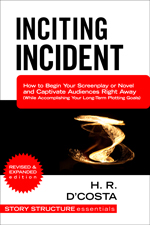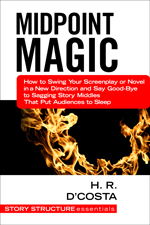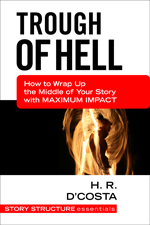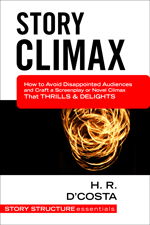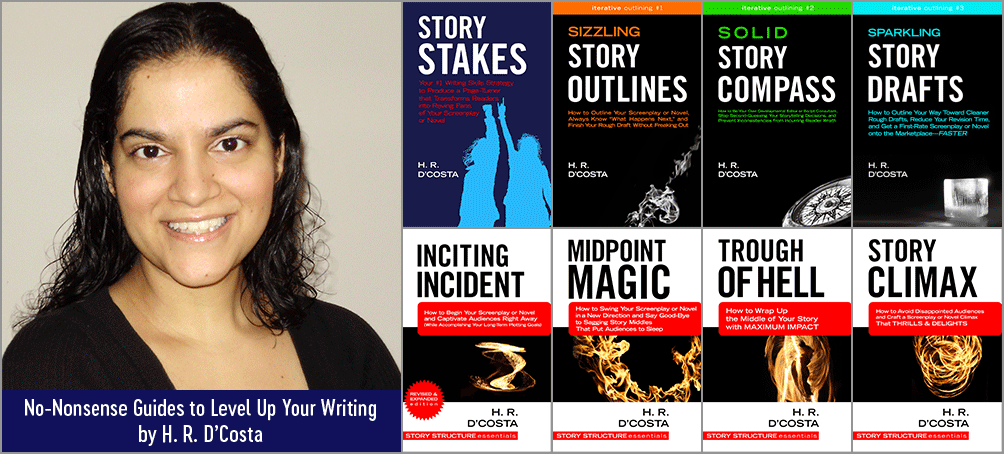
How can I help you, exactly?
By sharing mindset and plotting resources that will make writing easier for you—resources that were created after a multi-year quest where I analyzed 100s of movies, screenplays, and novels in order to understand what it takes to write a gripping story.
Resources like…
…the Ultimate Story Structure Worksheet.
Downloaded over 37,000 times by writers from around the world, it will help you plot your novel or screenplay like a boss. Grab your free copy here!
Now, let’s talk about you.
You’re passionate about telling stories.
You see story ideas everywhere.
When you come up with a good one…writing it down feels like unwrapping a birthday present.
Maybe even better.
Through the magic of your words, you might make someone—whom you’ve never met—shed tears…or grin for days.
Through your ability to transport readers and movie-goers to another world, you might make them so enthralled, they stay up all night to finish your story.
Thinking about that…well, that’s what enthralls you.
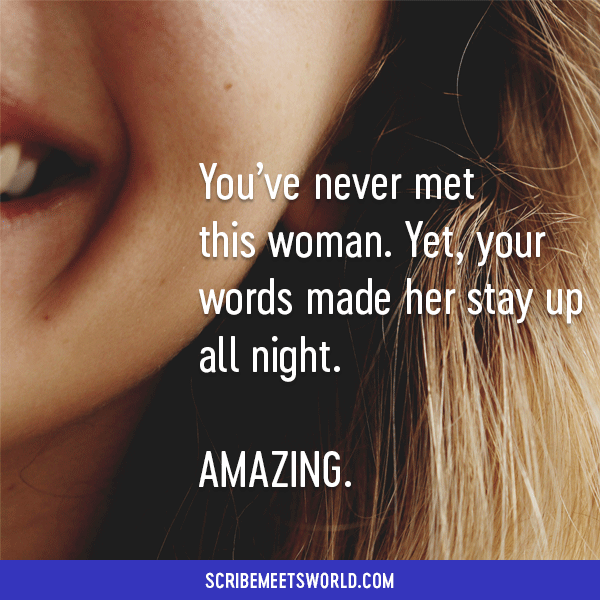
Oh yeah, you’ve been bitten by the writing bug.
It’s got you.
It’s got you bad.
You have a powerful story in you—several of them, in fact—and nothing’s going to stop you from sharing them with the world.
Sure, there were a few times you set your writing dream aside.
A death in the family. A difficult pregnancy. The flare-up of a chronic illness.
But for you, writing’s a passion (perhaps even an obsession).
You always return to it.
Always.
Although you’re passionate about writing screenplays or novels, it’s not just a hobby.
Not for you.
See, you’re a practical person.
You’re not just in it for the love.
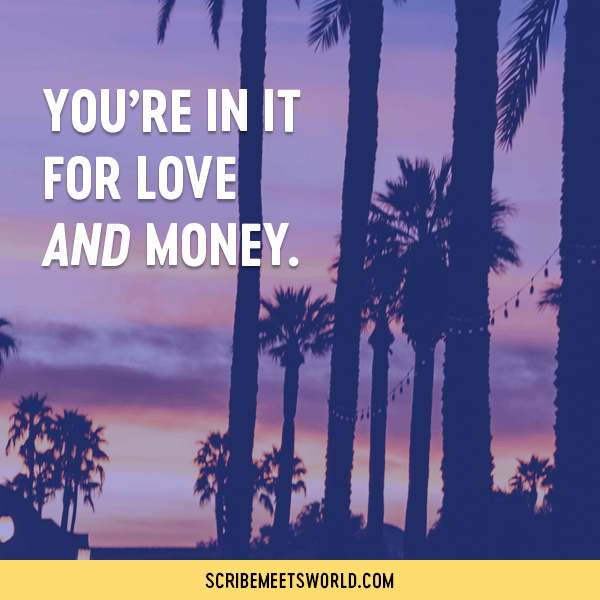
Because, with a great story idea, you could launch a blockbuster franchise.
And you have ideas with that kind of potential.
If done well, they could be the next Die Hard, Star Wars, Hunger Games, Game of Thrones, Bridget Jones (don’t judge; the rom-com is making a comeback!)…
…or even the next Harry Potter. (Why not dream big?)
’Course, you’ve heard the odds.
You’re facing a tsunami of competition.
But you’re not fazed.
Okay, you’re a little fazed—but you’re not going to let that stop you.
You’ve got lots of drive, and a decent amount of discipline.
You know you have what it takes to beat the odds, to be an overnight success (the one that was actually years in the making).
But.
Spinning a story from your great idea—the one with serious moneymaking potential—is more difficult than you expected.
You don’t see how to take your story from so-so to standout; from maybe-buy to must-have…
…from kind of good to crazy-good.
And you don’t understand why that is, why you’re not getting it.
After all, you’ve read the books, taken a couple of classes, and gotten feedback from script consultants and writer’s groups.
And still, something’s just not clicking.
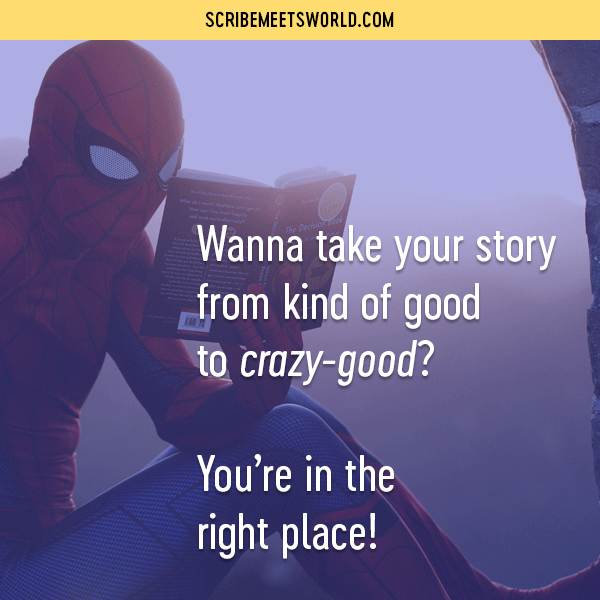
For example, you devoured Blake Snyder’s screenwriting guide Save the Cat.
You loved it because it made it feel easy to write a screenplay or novel. And, per Snyder’s advice, you included a scene where your protagonist “saves the cat.”
Even so, audiences aren’t emotionally involved in your plot. Plus, you’ve got the sinking sensation that you haven’t started your story in the right place.
Last year, you read On Writing by Stephen King. And what a gem that was!
It made you feel inspired to write, right when enthusiasm for your writing dream was starting to wither.
But even after you read it, and highlighted the heck out of it, you still don’t understand how to keep readers up all night, the way King does.
From a tip from a writing blog, you discovered Julia Cameron’s The Artist’s Way.
Following her guidelines, you took yourself on “artist dates.” You wrote—in longhand—your morning pages.
While they’re definitely valuable activities—and you’ll continue to do them—they haven’t given you the breakthrough you wanted.
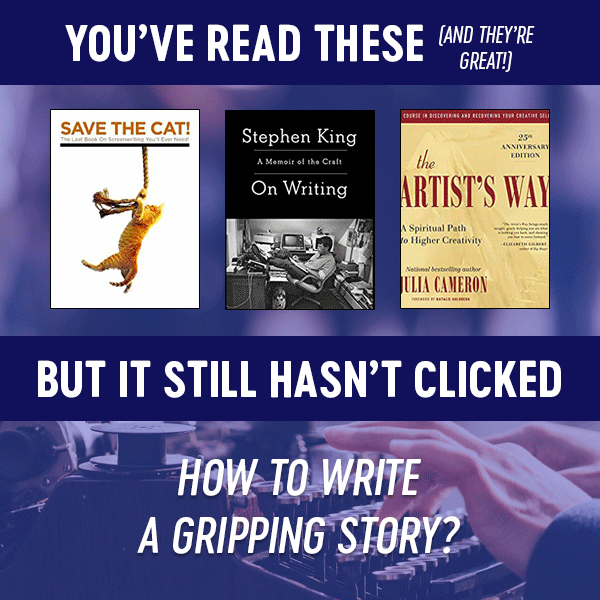
I know how you feel because I was like that too.
To hear my story and learn about the WHY behind Scribe Meets World, watch the video below. (When you’re done, scroll down to the heading, “Story Structure + Story Stakes = Reader “Glue.”)
If you prefer text, just keep on reading!
Oh, if you’re wondering about the image in the video thumbnail…it’s a tribute to the Harry Bosch series of mystery novels by Michael Connelly 🙂
I didn’t spend my childhood dreaming about becoming a writer.
I dreamed about becoming a lawyer.
In fact, I even took 4 years of Latin (1 in middle school + 3 in high school) because I thought it’d help me get into law school. (Yeah, I was hardcore.)
As part of my grand plan to get into my Dream Law School, I enrolled in Brown for college.
But during my last semester, I had an epiphany. Maybe I could write a novel like the ones I loved to read so much.
After I graduated, I set about writing that novel. However, it was a very stressful experience for many reasons—including a constant cycle of self-doubt.
Thus, I set aside my newfound writing dream and focused on my original plan: getting into my Dream Law School.
And I did! (I guess my AP Latin class paid off. *smile*)
But there was a voice inside of me that said, You’re not meant to be a lawyer. You’re meant to be a writer.
So I made a radical decision.
I declined Dream Law School—the long-term goal which I had dedicated myself to for so many years—in order to be a writer.
And I’ll be the first to admit, things didn’t go the way I had planned.
In part, that was because even though I called myself a writer, I didn’t write. Not enough, at any rate. A ferocious inner critic kept me in check.
Plus, I was feeling the limits of the writing guides I had read.
For example, Blake Snyder had convinced me about the merits of the midpoint. If I figured it out in advance, it’d be a lot easier to write my story.
However, even with his advice—“a movie’s midpoint is either an ‘up’ where the hero seemingly peaks (though it is a false peak) or a ‘down’ when the world collapses all around the hero (though it is a false collapse)”—I couldn’t figure out what to put there.
I became really frustrated.
My frustration became so great, I let go of my writing dream.
I applied to law school.
Again. *sigh*
This time, I applied to a school on the West Coast. And this time, once I got my acceptance letter, I enrolled.
What do you think happened?
Well, when I would read legal cases for our homework, I’d think to myself, Oh, this would make a great story idea. Or, This defendant would make a great character in a story.
It quickly became clear I was pursuing the wrong career.
In truth, I was living in a want-vs.-need story of my very own. Although I wanted to be a lawyer…I needed to be a writer.
So I made another radical decision.
I decided to say good-bye to my full-ride scholarship and apply my analytical skills to another purpose—the art of storytelling.
As motivational speaker Tony Robbins is prone to say, “Success leaves clues.”
I knew that if I studied successful films, screenplays, and novels, I’d be able to pick up on the tricks the pros use, but which weren’t discussed in detail (or mentioned at all) in the how-to guides I’d read.
If I adopted a systematic approach, treating stories as education (rather than entertainment), I would learn why some stories were so gripping…while others were easy to walk away from.
I’d be able to level up my writing.
Now, this is something that you can do, too. It’s a worthwhile endeavor, and I highly recommend it.
But it takes time.
It took me years.
Maybe you don’t have that kind of time.
Maybe you’d rather spend most of the writing time you have…well, actually writing.
Maybe, during your downtime, you want to watch a movie or read a book for fun, without pausing to take notes.
But…you’d still like to pick up those pro tricks.
Then, fellow scribe, you’re in the right place. I’m so happy you’re here. I’m thrilled to share my discoveries with you. Because, as a result of my multi-year quest, I’ve created different resources that are going to make your writing life easier.
And when writing is easier for you, you are much more likely to hold fast to your writing dream—even when life tells you to let go.
Before I give you a guided tour of these resources, let me share a brief overview. Take a look…
Story Structure + Story Stakes = Reader “Glue”
Going into my investigation, I initially focused on story structure.
Why?
With solid structure in place, your screenplay or novel will have the up-and-down rhythm that keeps audiences engaged from beginning to end.
As Chris Vogler explains in The Writer’s Journey:
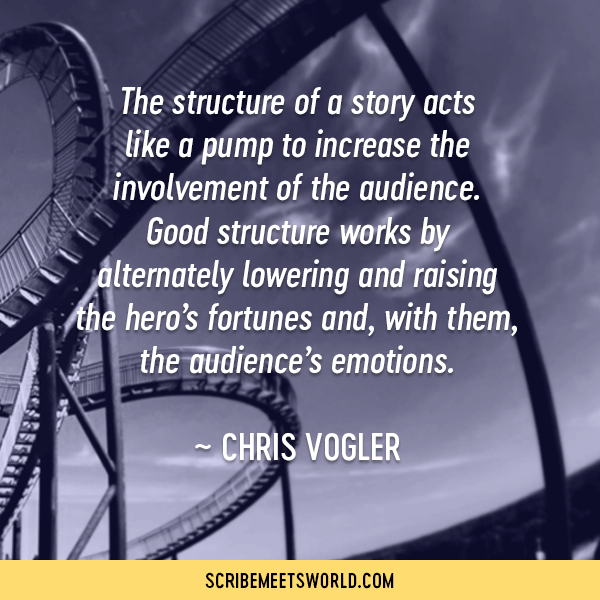
Cards on the table: although I understood that story structure was essential to maintaining audience engagement, I initially underestimated the value of stakes.
Severely underestimated them.
But when I was studying the ingredients of a gripping climax, this element cropped up again and again.
See, when stakes are in play, audiences know that bad things are going to happen if your protagonist fails to achieve his goal.
Because of this, audiences worry about him. They worry about the fate of the stakes.
Which means they’re under tension.
And the only way to relieve that tension is…
…to keep on turning the pages of your story.
Essentially, when handled well, stakes keep readers connected to both your plot and your characters.
Unfortunately, many writers make the mistake I initially did. They neglect the stakes. As a result, their stories fail to engage.
Here’s how screenwriter and Emmy-award winning producer Erik Bork explains it:
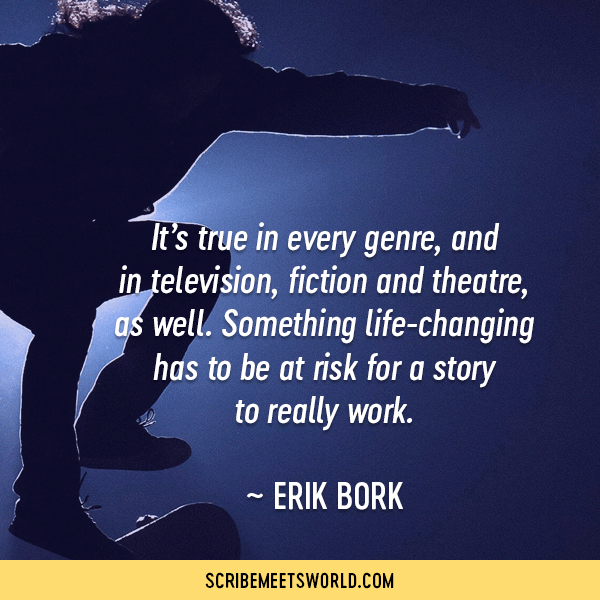
In short, if you know how to harness the power of story structure and story stakes, you’ll be able to keep readers glued to your pages.
Would you like practical tips on how to use structure and stakes to create reader “glue”?
Then check out these resources:
- this site, Scribe Meets World
- my no-nonsense writing guides
- my online course, Smarter Story Structure
You can find more details about each of these, below.
Note: Story structure is a big topic, so there’s lots of material on that. If you know right now that you’d like to level up your writing by mastering story stakes, then make sure to scroll down till you reach the stakes section on this page.
Best Writing Resources on Story Structure on Scribe Meets World
Use story structure well, and you’ll create an extraordinary emotional experience for readers.
You’ll keep them hooked.
If you need help with the basics of story structure, first read this simple guide to the 8 essential plot points.
Then, refine your understanding with these articles on:
- the inciting incident
- a special trick to use at the midpoint
- the “all is lost” moment
- the story climax (click here for the basics; and here for pro tips)
- the resolution
Finally, download my 18-page story structure worksheet (it’s free!).
Already downloaded over 37,000 times by writers around the world, it will help you plot a screenplay or novel like a boss. Get it here.
Write Better, Write Faster…with the Iterative Outlining series
By figuring out the structure of your story in advance, you’ll have a loose outline to refer to when you write.
This will help you save time AS you write, ’cause you won’t be wondering what happens next.
Additionally, you’ll save time AFTER you write because you won’t have to completely overhaul the structure of your story during rewrites.
That’s why I recommend you read Sizzling Story Outlines (the first book in the Iterative Outlining series). In Part II, it shows you—step by step—how to map out the structure of your story from your initial idea.
If you want a proven nuts-and-bolts method to get your stories told, trust this guide. I followed the instructions for my last script to break the kernel of my story idea into a real outline.
It took about two months to finish a first draft—which received extremely positive professional coverage.
~ Ronald Drescher, screenwriter of The Inventors, a Quarterfinalist in the ScreenCraft Public Domain Screenplay Competition
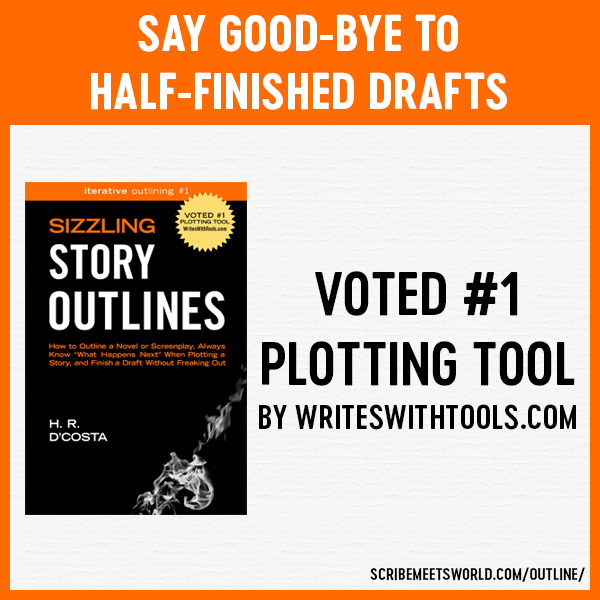
» Check out my interview with Megan of WritesWithTools.com here
Not a plotter? Not a problem. You can still benefit from the Iterative Outlining series.
That’s because you can use the practical tips in these writing guides to edit your draft into shape (while minimizing overwhelm).
Speaking of practical tips…
…you’ll learn how to optimize your story’s structure in Part II of Sparkling Story Drafts (the third book in the Iterative Outlining series).
Basically, you’ll embrace the philosophy of marginal gains and make minor-to-moderate improvements to the structural turning points in your outline.
FYI: When the same approach was embraced by Britain’s cycling team, a British cyclist won the Tour de France for the first time, ever. (Hat tip to James Clear for writing about it.)
Imagine what embracing it could do for you…
As I read Sparkling Story Drafts, I wrote a ton of sticky notes to improve my already published novels and a draft I’m working on—woohoo! Get yourself a copy. You’ll write faster and your writing will improve.
~ Lurene Miller, co-author of Kingdom Lost, first in a middle-grade SFF series co-written with Lurene’s grandson, Harry
By the way, Sparkling Story Drafts will show you how to do a lot more than optimize your story’s structure. It’ll also show you how to fix problem spots like these:
- The plot is episodic, doesn’t escalate well, or is loaded with contrivance.
- Opportunities to heighten audience emotion have been overlooked.
- Characters have been sacrificed for the sake of the plot (or other reasons).
- The subplots detract, rather than contribute toward, the main plot.
- The pacing is monotonous or sluggish (or perhaps, too frenetic).
- The cast is too large to keep audiences involved in what’s happening.
- You’ve undermined your protagonist at the last minute.
Sparkling Story Drafts is recommended by Elizabeth Spann Craig, author of 25+ cozy mysteries (including the bestselling Myrtle Clover series) and blogger whose website elizabethspanncraig.com has been voted one of the 101 Best Websites for Writers by Writer’s Digest.
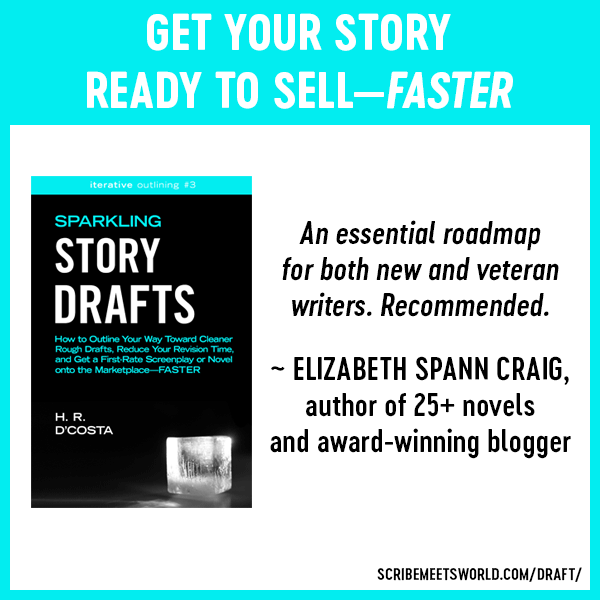
What about Solid Story Compass, the second book in the Iterative Outlining series?
Good question.
Solid Story Compass doesn’t focus on structure. Still, you’ll probably want to check it out because it’ll help you analyze your story the way a developmental editor or script consultant would.
With it, you should be able to produce a clear, cohesive story, while saving hundreds (maybe thousands) of dollars.
Here’s what one author had to say about the Iterative Outlining series:
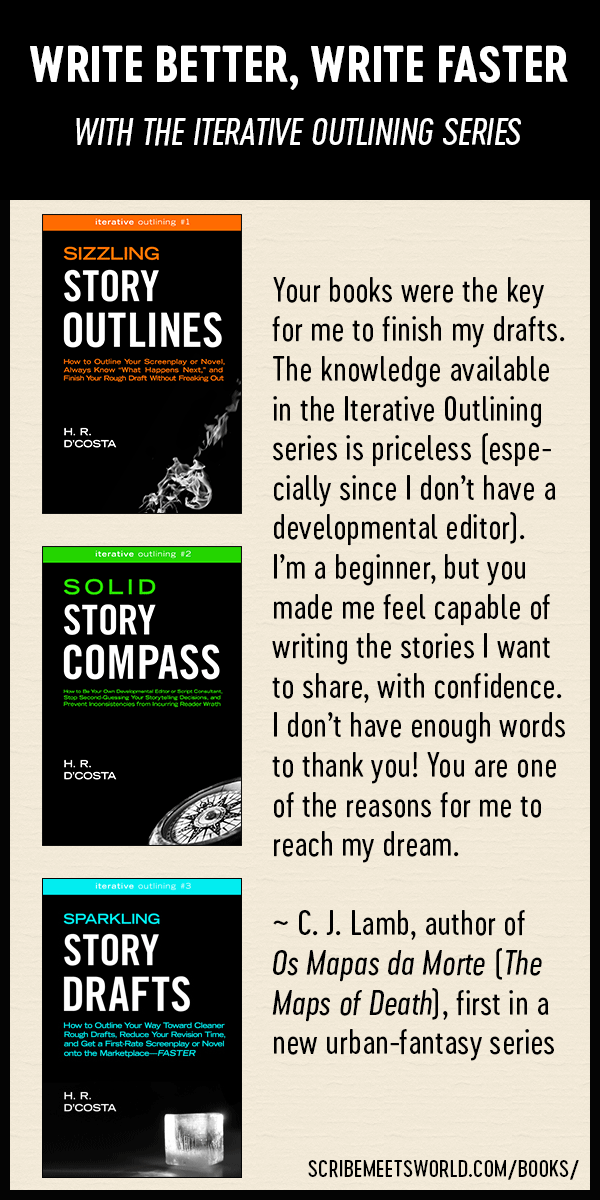
Note: At this time, Solid Story Compass and Sparkling Story Drafts are exclusively available on Amazon. Sizzling Story Outlines—as well as the writing guides in the Story Structure Essentials series and Story Stakes (see below for more details)—are all available on Amazon, plus Apple, Kobo, and Smashwords.
Get a Deep Dive (+ Practical Takeaways) with the Story Structure Essentials series
In some writing circles, Blake Snyder’s screenwriting guide Save the Cat gets a lot of flak.
If you’re like me, you’re glad he wrote it because it makes writing a screenplay (or novel) feel accessible. After reading it, you feel inspired. You think to yourself, Yes, I can do this.
Not only that, you actually do it!
That’s fantastic, don’t get me wrong.
However, when you finish your draft and examine it, it’s time to face the truth.
Your story is…well, kind of a mess.
And Snyder’s book, and other writing guides in the same vein, they don’t tell you how to fix it.
They tell you to start your story in an interesting place or to raise the stakes—all good advice.
Following that advice will help you keep readers engaged.
But unfortunately, these writing guides stop there, and move on to another topic like creating characters, formatting scripts, or querying literary agents.
These guides don’t give you a deep dive into structure or stakes…because they don’t have the room for that. That’s not really their purpose, anyway.
They’ve done their job. They got you to take action toward your dream. They got you to write a draft.
But now, for your next steps, you need something that goes deeper.
You’ve probably read those kinds of writing guides too.
It’s clear that their authors are familiar with the inner workings of great stories. However, these authors have taken a very theoretical approach.
Because of that, you don’t understand how to apply their insights to your own draft. It feels like there are 10 steps between gathering the knowledge in the writing guide and applying that knowledge to create a gripping story.
The books in the Story Structure Essentials series (Inciting Incident, Midpoint Magic, Trough of Hell, and Story Climax) are different.
They’ll give you the deep dive that other writing guides don’t have room for. At the same time, each book in the series is very practical. They’re full of tips you can use right away to fix your draft and transform that hot mess into a captivating tale.
This is what Anna Flakk, author of the urban-fantasy novel A Wicked Chance, had to say about the books in the Story Structure Essentials series:
These are some of the best books I’ve read about writing. I wish I found them before!
My plotting process is no longer scattered, I don’t cycle back and forth because I forgot something or things don’t work.
Which book in the Story Structure Essentials series should you read right now? It depends on which story structure problem you’re currently grappling with.
If you’re struggling to begin your story in the right place, check out Inciting Incident.
It’ll help you decide the best way to begin your story, and walk you through what to think about so that your story beginning immediately hooks audiences…but at the same time, lays down the groundwork for long-term emotional involvement.
I loved Inciting Incident. It was so great that this morning I bought Midpoint Magic. My plan is to buy all the books in the Story Structure Essentials series.
~ Sharon Wray, author of Every Deep Desire, the first novel in the Amazon bestselling Deadly Force romantic-suspense series, where smart, sexy heroines teach ex–Green Berets that Grace always defeats Reckoning
If the middle of your story is monotonous and repetitive and just kind of “blah,” read Midpoint Magic and Trough of Hell.
They’ll give you ready-made options for two critical structural turning points (the midpoint and the end of Act Two, respectively) so you can pick the one that’s best for your plot and genre. Not only that, you’ll learn how to execute these key plot points to best effect.
Note: If you like to plot with the Snowflake Method, Trough of Hell might help you figure out your third disaster.
If your story climax feels rather wimpy—your protagonist faces off against your antagonist for 10 pages, and then it’s over—take a look at Story Climax.
It’ll show you how to overcome what Blake Snyder refers to as “the eternally light Act Three,” and pay off your narrative debts in a way that leaves audiences begging for more.
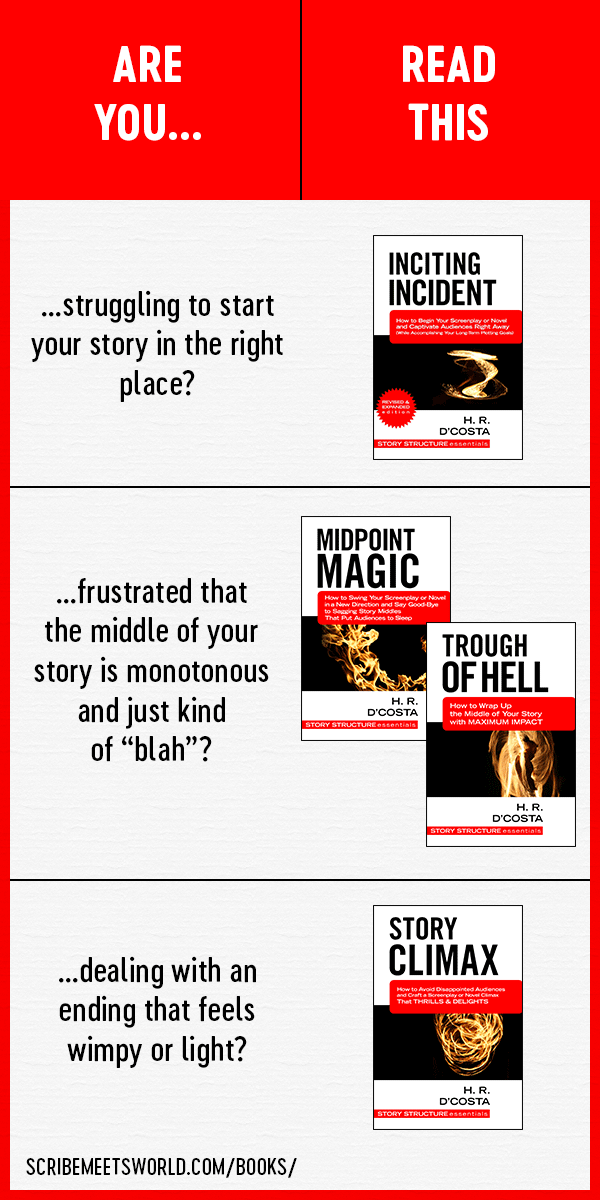
All the books in the Story Structure Essentials series are available in ebook format on Amazon, Apple, Kobo, and Smashwords. Story Climax is available in both ebook and print.
The writing guides in the Story Structure Essentials series are perfect when you want a deep dive (without doing the deep work). But if you’re in a hurry, then you might prefer to enroll in my online course, Smarter Story Structure.
Smarter Story Structure: A Shortcut for Outlining Your Screenplay or Novel (While Overcoming Common Plot Problems)
It is possible to become a pro at story structure quickly?
Sure. Binge on the modules in my online course, Smarter Story Structure, and you could become a story structure ninja in as little as 5 days.
It’ll be like getting all the great takeaways from a weekend writing seminar…without dealing with bad traffic, hotel fare, and airport lines. Bonus: you get to stay in your pajamas.
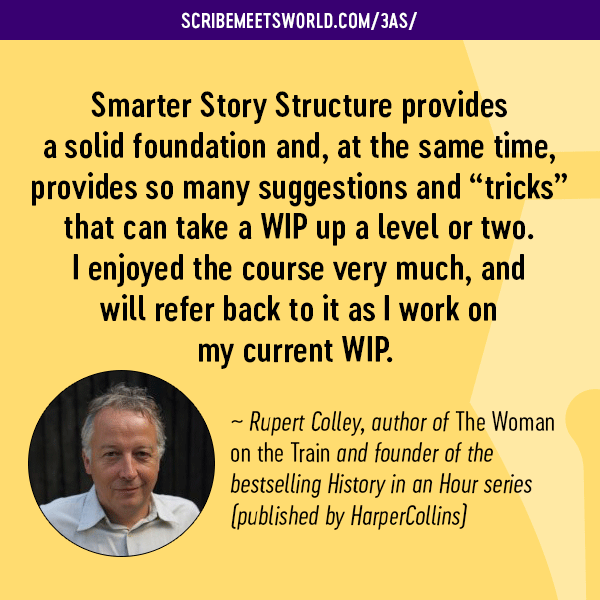
Here are more details about what you’ll get with the course:
- 30 no-nonsense, fluff-free lessons (FYI: This course was designed with a practical person, like yourself, in mind.)
- 15 bite-sized videos (All the videos are under 10 minutes so that you can improve your writing skills without disrupting your busy schedule.)
- 3 audio-only lessons and several high-quality visuals—100+ images, 12 infographics, and 5 slide decks (I like to think there’s something there for you, regardless of your learning style.)
- 3 PDF workbooks designed exclusively for this course (including the 70+ page Story Structure Organizer…which’ll help you build a sturdy structure for your next writing project—step by step)
- 3 cheat sheets (including one that’ll make it super-easy for you to start your story the right way)
- freedom to decide when you want to complete each lesson (Once you buy, you get immediate access to all the course materials, which you can review at your own pace.)

To sell your story, it must be worthy of investment. That’s a basic truth.
When your story has strong structure, it won’t be loaded with the kind of problems that prevent buyers (e.g. Netflix, book lovers, etc.) from wanting to invest time or money into your story.
Problems like these:
- the story starts too slowly (according to a Goodreads survey, 46.4% of readers abandon novels for this reason)
- the story doesn’t get going until halfway through (this happened in almost a quarter of scripts read by a studio reader in a year)
- the middle “runs out of gas” (even John Grisham admits this is a tricky issue)
- the climax doesn’t deliver fireworks, merely sparklers
- the story is the right length…but isn’t a good read (uh-oh)
Smarter Story Structure will help you learn how to overcome these problems quickly. Click here to learn more about Smarter Story Structure.
Which is better…the course or the books?
Honestly, they’re both valuable. The course will give you a great foundation in story structure, and the writing guides build upon that foundation.
But if it’s an either-or proposition for you, then my answer is: it depends on your situation.
Is there are a particular area that you’re struggling with (e.g. starting your story in the right place)? Do you want to study how to solve that problem leisurely? Then go for the writing guides (in this case, Inciting Incident).
In other circumstances, though, it makes more sense to take the course.
Say, for instance, that you have an amazing story idea that you know the marketplace would gobble up—but you have to write it first! So you want to bang out a draft as quickly as possible.
Then it’s better to enroll in the course.
That’s because Smarter Story Structure takes all the best tips from the writing guides in the Story Structure Essentials series (that’s Inciting Incident, Midpoint Magic, Trough of Hell, and Story Climax) as well from Story Stakes and Sparkling Story Drafts—and condenses them into a framework you can use right away to plot your next novel or screenplay.
Think of it like this: to create an amazing, gourmet salad, you could scour the veggie section of your grocery store for vine-ripened tomatoes, grater-friendly carrots, and crunchy green lettuce—and then scour the aisles for the perfect ingredients for salad dressing…
…or you could get a “grab ’n’ go” container and scoop up a ready-made salad from the salad bar.
The course is like the salad-bar option.
It gives you a structural model that you can “grab and go,” and hence, finish your story faster.
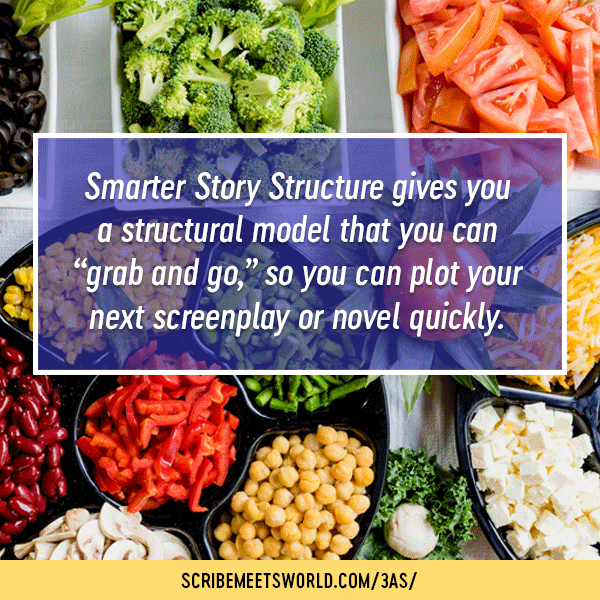
Even if you’re not in a hurry, the course might be a better fit for you if you learn best with visuals and video.
For some writers, a point doesn’t stick unless they see it in an image or hear it vocalized in a video (or audio) lesson. If you’re like that, then the course is great because it will reinforce all the key takeaways from the writing guides listed above.
Click here to learn more about Smarter Story Structure
After you learn how to wield story structure like a pro (with the course, the writing guides, or both), you’ll know how to deliver a roller-coaster ride to audiences. But to keep them hooked, there’s another crucial ingredient to master.
The stakes.
Keep Readers Engaged with Story Stakes
As mentioned earlier, stakes create tension.
They’re a powerful tool—a surefire (and often overlooked) way to level up your writing.
Use stakes well, and you’ll keep readers turning the pages of your screenplay or novel.
You’ll keep them up all night.
You’ll keep them glued to your pages.
My writing guide Story Stakes (available in both ebook and print) will show you what to do.
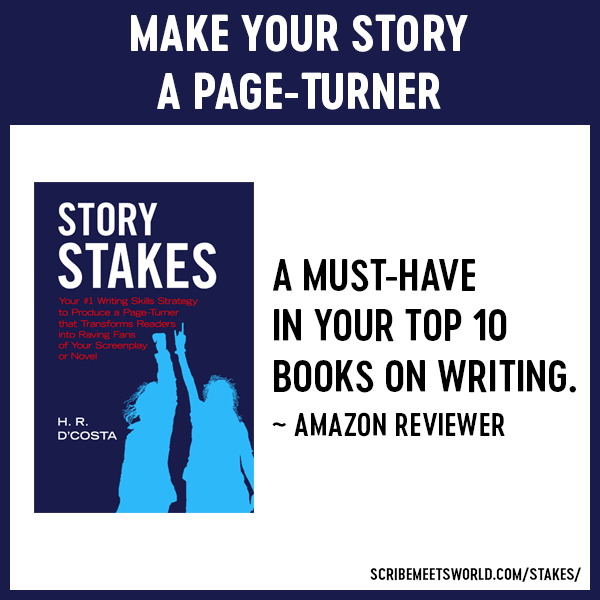
Sometimes, you’ll know the stakes of your story right away. For example, if you came up with the premise of Speed, you’d know the stakes would be the passengers on the bus.
But other times, it’s not so clear. That’s when you’ll really love chapter 1 of Story Stakes. It gives you a list of 11 story stakes, so you can easily pick the best ones for your premise.
Then, in chapter 2, you’ll learn how to apply modulating factors to the stakes. What are they?
Think of them like the audio-control knobs on a stereo system. When you take advantage of them, they turn up the emotional “volume.” But when modulating factors are used poorly (or not at all), the emotional volume becomes muted.
Modulating factors are how you get audiences to become even more invested in the plight of the passengers on the bus (or whatever your stakes may be).
With this kind of emotional investment, it becomes impossible for readers to put down your story.
In later chapters in Story Stakes, you’ll discover the story stake matrix.
Made of four cells, it’s defined by two parameters: (1) type of story stake (the 11 story stakes are divided into categories) and (2) the cost of participation (it’s either high or low, depending on the kind of danger associated with the action your protagonist takes to achieve his goal).
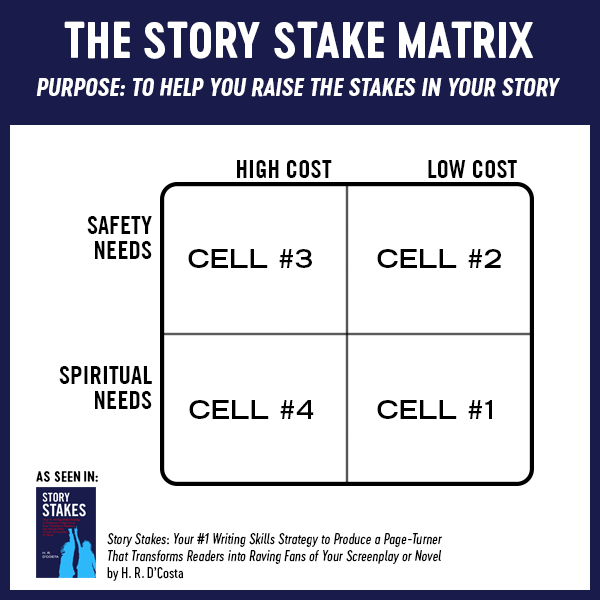
Here’s why the matrix is valuable: if you understand how a story transitions from one cell to another, you’ll know exactly how to raise the stakes.
H. R. D’Costa shows writers how to layer stakes, one on top of another, blending them into a compelling tangle from which the hero—and the reader—cannot escape.
Story Stakes provides lots of solid practical advice in a straightforward, logical style—making it easy for writers to put its tips to use in their own work. This is now one of my favorite go-to guides on writing.
~ Debbie Burke, author of the thrillers Instrument of the Devil (a Kindle Scout and Zebulon Award winner) & Stalking Midas; contributor to The Kill Zone (a Writer’s Digest 101 Best Blogs for Writers); and founding member of Montana’s Authors of the Flathead (which has provided support and mentorship to local writers for almost 30 years)
Click here to learn more about Story Stakes
Not quite ready for the matrix? That’s okay. Get familiar with the basics of story stakes by reading this article or listen to this podcast interview.
A Special Message Just for Novelists
Scribe Meets World was originally intended for screenwriters.
That’s why, as you read the articles on the site, you might come across phrases like “screenwriting tips,” “screenplay writing,” or “writing for the movies.”
As you encounter these phrases, you might wonder if the tips in these articles can help you as a novelist.
In most cases, the answer is yes!
Although this site was originally intended for screenwriters, it’s always been focused on the principles of sound storytelling (as opposed to screenplay format, for example).
In other words, the content on this site can help you develop a commercial novel with the plot twists and compact structure of successful Hollywood films.
That being said, there are two caveats:
- You may have to adapt the tips (slightly) to apply them to your manuscript.
- With rare exception (see this article on the secret to writing a bestselling novel), all of the examples on this website come from movies (or movies adapted from novels).
Before You Go…
Don’t forget to download the Ultimate Story Structure Worksheet.
At 18 pages, it’s comprehensive—but not overwhelming. Because it’s already been downloaded over 37,000 times by writers from around the world, you know it’s going to be helpful.
Download this valuable writing resource today—and plot your next story like a boss!
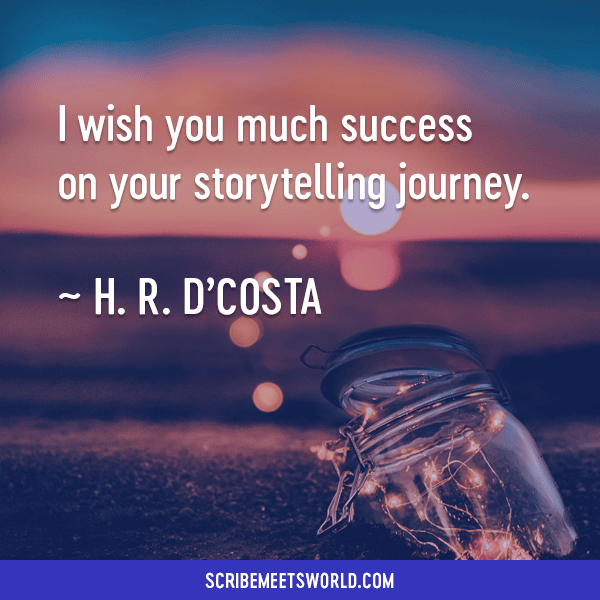
SOURCES: Erik Bork on story stakes (https://www.flyingwrestler.com/2017/01/what-are-the-stakes/); James Clear on marginal gains (https://jamesclear.com/marginal-gains)
CREDITS: Grinning woman by Brandi Redd (https://unsplash.com/photos/P3qLX14CJrk); Palm-lined bliss by Jordan Whitt (https://unsplash.com/photos/wCpAx5fpUDQ); Spider-Man reading a book by Raj Eiamworakul (https://unsplash.com/photos/o4c2zoVhjSw); Typing away by Milkovi (https://unsplash.com/photos/FTNGfpYCpGM); Circular roller coasters by Mark Asthoff (https://unsplash.com/photos/OVRxj5h6n7o); Skateboarder by Andhika Soreng (https://unsplash.com/photos/3oljXvtTJtM); Vertical roller coaster by Mark Asthoff (https://unsplash.com/photos/bUsIoLKTk18); Scrumptious salad bar by Dan Gold (https://unsplash.com/photos/4_jhDO54BYg); Jar of wishes by Yeshi Kangrang (https://unsplash.com/photos/P-2CxtQvUQY)
